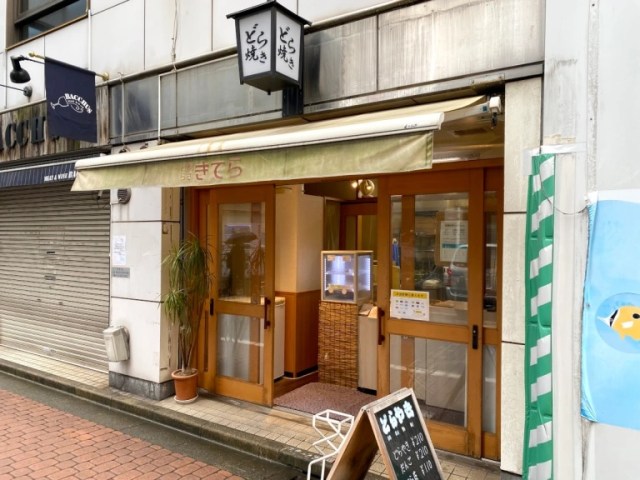
Hidden under the tracks near Akihabara is one of our new favorite places to grab sweets on the street.
If you’ve got a craving for dessert in Tokyo, the easiest way to find the latest hit sweets shop is to look for a line of people stretching out the door. But what if you’re looking for the next big thing, the place that most people don’t know about yet? Then you’ve got to pound pavement when your stomach is growling, like our Japanese-language reporter P.K. Sanjun recently did in Tokyo’s Kanda neighborhood.
Tucked underneath the train tracks of the Yamanote loop train line that circles through downtown Tokyo, Kitera is about halfway between Kanda and Akihabara Stations. With its unassuming, semi-secluded location, you probably won’t spot that many people queuing up outside, and you probably won’t see many people working inside the place either, as it appears to be run and staffed by just a single person.
Kitera specializes in dorayaki, round palm-sized pancake-like confectionaries with a filling of anko (sweet beans) sandwiched inside. Dorayaki are just about P.K.’s favorite Japanese dessert, and while he enjoys the mass-produced varieties available at supermarkets and convenience stores, what really makes his taste buds sing are dorayaki produced in-store by specialty sweets shops, like the famous stores Usagiya and Kameju, in the city’s Okachimachi and Asakusa districts. But while just about any Tokyoite with a sweet tooth knows about those two places, P.K. had never heard of Kitera before he stumbled across it. He instantly felt compelled to give this new-to-him dorayaki specialist a try, though, because not only do they sell orthodox anko-filled dorayaki for 210 yen (US$1.55)…
…they also sell unstuffed dorayaki, for you to add whatever you want to at home, for 110 yen. This is something most dorayaki shops don’t do, and Kitera’s display of confidence in the deliciousness of even the cake component of their sweets convinced P.K. to purchase not only a regular anko dorayaki, but a special zunda (edamame) anko one too for 240 yen.
Eagerly unwrapping his sweets, P.K. wasted no time diving into the taste test. Part of what makes dorayaki so appealing is that it doesn’t try to be coy with its deliciousness, and as soon as the first bite hit P.K.’s taste receptors, he was in dorayaki heaven. The cake part was sublimely soft and fabulously fluffy, showing that Kitera’s confidence in it is totally deserved. The anko was marvelously moist, satisfyingly sweet but still allowing the natural flavors of the beans to make their presence felt.
While both the cake and anko are amazing, they become so in opposite ways. Kitera’s owner explained to P.K. that the shop’s cake is made fresh daily, with just enough to cover that day’s dorayaki, so that none of the sweets are made with dry or hardened cake. Kitera’s anko, on the other hand, is prepared the day before. In basic terms, anko is made by stewing the beans, and just like with curry roux or spaghetti sauce, its flavor deepens overnight.
▼ The zunda dorayaki filling has zunda’s characteristic bright green color.
Kitera’s standard anko dorayaki is available all the time, but the other flavors vary by day of the week, with new ones cycled in every month or so. As of when we stopped by, zunda is available on Wednesdays and Thursdays, and on Mondays and Tuesdays you can get plum dorayaki. Fridays and Saturdays were yet-to-be-determined mysteries, but now that we’ve found this place, we’re happy to have extra reasons to go back and see what other delicious dorayaki they cook up.
Shop information
Kitera / きてら
Address: Tokyo-to, Chiyoda-ku, Kanda Higashimatsushitacho 49
東京都千代田区神田東松下町49
Open 10 a.m.-6 p.m. (weekdas), 10 a.m.-5 p.m. (Saturdays)
May close earlier if ingredients/stock runs out
Closed Sundays
Photos ©SoraNews24
● Want to hear about SoraNews24’s latest articles as soon as they’re published? Follow us on Facebook and Twitter!
[ Read in Japanese ]


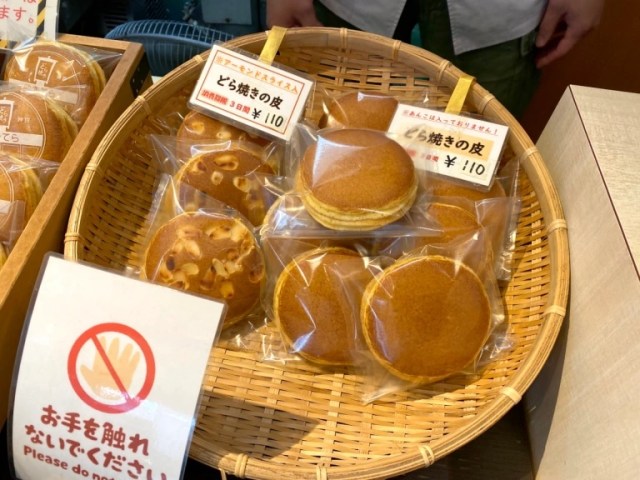
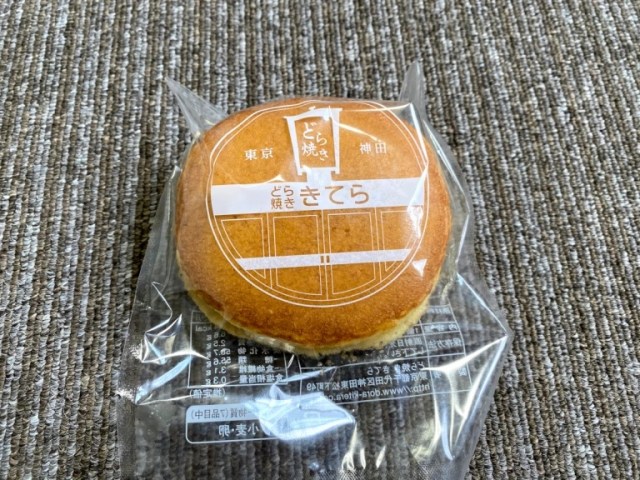
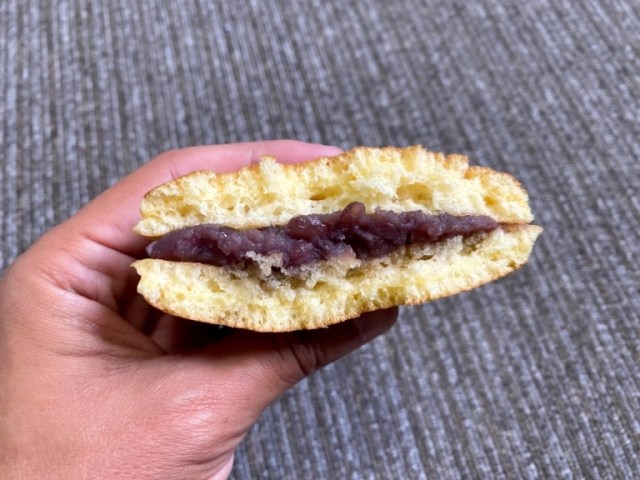
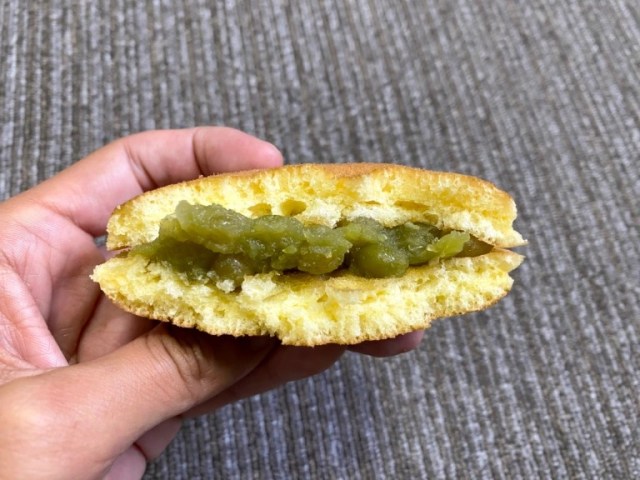
 We try a dubious-sounding “wet dorayaki” and are in for more than one surprise
We try a dubious-sounding “wet dorayaki” and are in for more than one surprise We try some “raw” dorayaki from Kyoto and are overwhelmed with its thickness
We try some “raw” dorayaki from Kyoto and are overwhelmed with its thickness Japanese sweets lovers soon to be in their blue heaven with beautiful aqua-color Ramune dorayaki
Japanese sweets lovers soon to be in their blue heaven with beautiful aqua-color Ramune dorayaki Face Dorayaki Japanese sweets: Delicious, terrifying, or both?【Photos】
Face Dorayaki Japanese sweets: Delicious, terrifying, or both?【Photos】 Japan’s sweet/terrifying face cakes are here as we order a batch of Kao Dorayaki【Photos】
Japan’s sweet/terrifying face cakes are here as we order a batch of Kao Dorayaki【Photos】 Bad tourist manners at Mt Fuji Lawson photo spot prompts Japanese town to block view with screens
Bad tourist manners at Mt Fuji Lawson photo spot prompts Japanese town to block view with screens Foreigner’s request for help in Tokyo makes us sad for the state of society
Foreigner’s request for help in Tokyo makes us sad for the state of society McDonald’s Japan’s new pancake pie is a taste sensation
McDonald’s Japan’s new pancake pie is a taste sensation One of Japan’s oldest castles now lets travelers spend night on the grounds, drink in its keep
One of Japan’s oldest castles now lets travelers spend night on the grounds, drink in its keep Two things to do, and two things not to do, when leaving a traditional Japanese inn
Two things to do, and two things not to do, when leaving a traditional Japanese inn Studio Ghibli unveils new goods that tip the hat to The Cat Returns
Studio Ghibli unveils new goods that tip the hat to The Cat Returns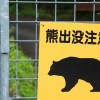 Bear attacks car in Japan, breaks windshield with its paw【Video】
Bear attacks car in Japan, breaks windshield with its paw【Video】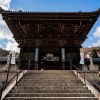 A visit to the ordinarily forbidden hall of Nara’s Hasedera Temple【Photos】
A visit to the ordinarily forbidden hall of Nara’s Hasedera Temple【Photos】 FUK COFFEE?!? Japanese cafe has a perfectly innocent reason for its startling-looking name
FUK COFFEE?!? Japanese cafe has a perfectly innocent reason for its startling-looking name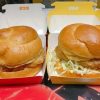 Who wins in a battle of McDonald’s and Komeda Coffee’s chicken tatsuta burgers?【Taste test】
Who wins in a battle of McDonald’s and Komeda Coffee’s chicken tatsuta burgers?【Taste test】 Japanese ramen restaurants under pressure from new yen banknotes
Japanese ramen restaurants under pressure from new yen banknotes Red light district sushi restaurant in Tokyo shows us just how wrong we were about it
Red light district sushi restaurant in Tokyo shows us just how wrong we were about it McDonald’s new Happy Meals offer up cute and practical Sanrio lifestyle goods
McDonald’s new Happy Meals offer up cute and practical Sanrio lifestyle goods Tokyo Tsukiji fish market site to be redeveloped with 50,000-seat stadium, hotel, shopping center
Tokyo Tsukiji fish market site to be redeveloped with 50,000-seat stadium, hotel, shopping center Japanese city loses residents’ personal data, which was on paper being transported on a windy day
Japanese city loses residents’ personal data, which was on paper being transported on a windy day Beautiful Red and Blue Star luxury trains set to be Japan’s new Hokkaido travel stars
Beautiful Red and Blue Star luxury trains set to be Japan’s new Hokkaido travel stars Ghibli Park now selling “Grilled Frogs” from food cart in Valley of Witches
Ghibli Park now selling “Grilled Frogs” from food cart in Valley of Witches New definition of “Japanese whiskey” goes into effect to prevent fakes from fooling overseas buyers
New definition of “Japanese whiskey” goes into effect to prevent fakes from fooling overseas buyers Our Japanese reporter visits Costco in the U.S., finds super American and very Japanese things
Our Japanese reporter visits Costco in the U.S., finds super American and very Japanese things All-you-can-drink Starbucks and amazing views part of Tokyo’s new 170 meter-high sky lounge
All-you-can-drink Starbucks and amazing views part of Tokyo’s new 170 meter-high sky lounge More foreign tourists than ever before in history visited Japan last month
More foreign tourists than ever before in history visited Japan last month New Pokémon cakes let you eat your way through Pikachu and all the Eevee evolutions
New Pokémon cakes let you eat your way through Pikachu and all the Eevee evolutions Disney princesses get official manga makeovers for Manga Princess Cafe opening in Tokyo
Disney princesses get official manga makeovers for Manga Princess Cafe opening in Tokyo We try out “Chan Ramen”, an underground type of ramen popular in the ramen community
We try out “Chan Ramen”, an underground type of ramen popular in the ramen community Sales of Japan’s most convenient train ticket/shopping payment cards suspended indefinitely
Sales of Japan’s most convenient train ticket/shopping payment cards suspended indefinitely Sold-out Studio Ghibli desktop humidifiers are back so Totoro can help you through the dry season
Sold-out Studio Ghibli desktop humidifiers are back so Totoro can help you through the dry season Japanese government to make first change to romanization spelling rules since the 1950s
Japanese government to make first change to romanization spelling rules since the 1950s Ghibli founders Toshio Suzuki and Hayao Miyazaki contribute to Japanese whisky Totoro label design
Ghibli founders Toshio Suzuki and Hayao Miyazaki contribute to Japanese whisky Totoro label design Doraemon found buried at sea as scene from 1993 anime becomes real life【Photos】
Doraemon found buried at sea as scene from 1993 anime becomes real life【Photos】 Tokyo’s most famous Starbucks is closed
Tokyo’s most famous Starbucks is closed One Piece characters’ nationalities revealed, but fans have mixed opinions
One Piece characters’ nationalities revealed, but fans have mixed opinions We asked a Uniqlo employee what four things we should buy and their suggestions didn’t disappoint
We asked a Uniqlo employee what four things we should buy and their suggestions didn’t disappoint Taste-testing every single sakura sweet and cherry blossom drink we could find at Mujirushi
Taste-testing every single sakura sweet and cherry blossom drink we could find at Mujirushi Japan’s Curry Bread Grand Prix award winner is…a dorayaki sweet?
Japan’s Curry Bread Grand Prix award winner is…a dorayaki sweet? Haneda Airport’s must-buy Japanese sweet is hard to find but worth it
Haneda Airport’s must-buy Japanese sweet is hard to find but worth it Häagen-Dazs’ upcoming traditional Japanese sweets cafe in Tokyo has our mouths watering already
Häagen-Dazs’ upcoming traditional Japanese sweets cafe in Tokyo has our mouths watering already Red bean paste and cream cheese — a divinely sweet combination?
Red bean paste and cream cheese — a divinely sweet combination? Tokyo Banana’s Legendary Curry Bread tests the limits of what makes a good karepan 【Taste test】
Tokyo Banana’s Legendary Curry Bread tests the limits of what makes a good karepan 【Taste test】 Häagen-Dazs new zunda mochi ice cream gives us a lot of delicious things to think about
Häagen-Dazs new zunda mochi ice cream gives us a lot of delicious things to think about What are you waiting for? Sakura pancakes are in Japanese convenience stores right now!
What are you waiting for? Sakura pancakes are in Japanese convenience stores right now! Pretend you’re Sony or Nintendo as you devour Sega with Tokyo’s new Sega Logo-yaki sweet
Pretend you’re Sony or Nintendo as you devour Sega with Tokyo’s new Sega Logo-yaki sweet Overly honest taiyaki restaurant flooded with customers after admitting to reducing sweet beans
Overly honest taiyaki restaurant flooded with customers after admitting to reducing sweet beans Looks like Slime and tastes mysterious – Taste-testing Japan’s newest Dragon Quest sweets
Looks like Slime and tastes mysterious – Taste-testing Japan’s newest Dragon Quest sweets Will it waffle? We put various Japanese snacks through a waffle iron, just because【SoraKitchen】
Will it waffle? We put various Japanese snacks through a waffle iron, just because【SoraKitchen】 Doutor Coffee Japan’s cherry blossom drinks and snacks are a pretty pastel paradise
Doutor Coffee Japan’s cherry blossom drinks and snacks are a pretty pastel paradise Tokyo pub lets you grill traditional Japanese dessert right at your table in all-you-can-eat deal
Tokyo pub lets you grill traditional Japanese dessert right at your table in all-you-can-eat deal Tired of apple? McDonald’s Japan now has anko sweet red bean pies
Tired of apple? McDonald’s Japan now has anko sweet red bean pies Hello Kitty and Doraemon collaboration merch ends the year adorably!【Photos】
Hello Kitty and Doraemon collaboration merch ends the year adorably!【Photos】
Leave a Reply